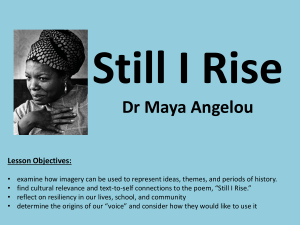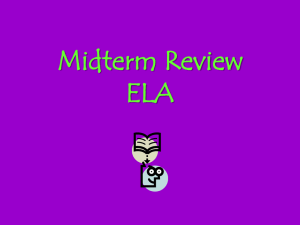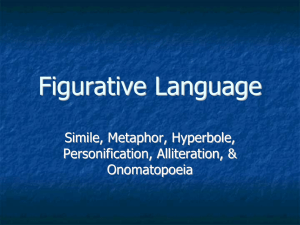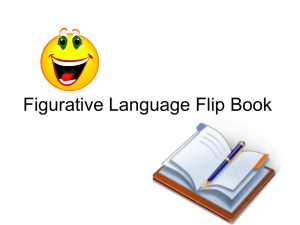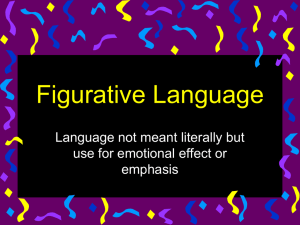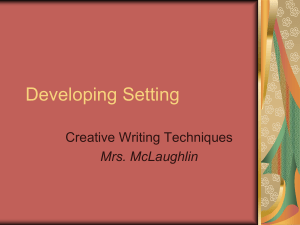Figurative Language: 11th Grade Reading Comprehension
advertisement
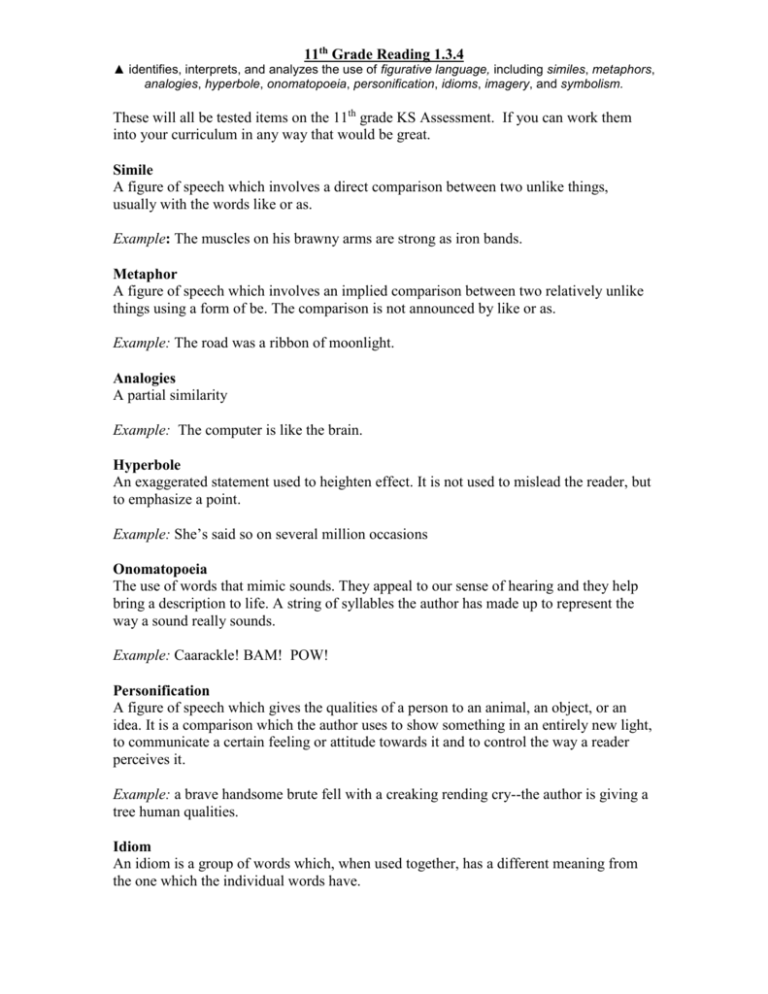
11th Grade Reading 1.3.4 ▲ identifies, interprets, and analyzes the use of figurative language, including similes, metaphors, analogies, hyperbole, onomatopoeia, personification, idioms, imagery, and symbolism. These will all be tested items on the 11th grade KS Assessment. If you can work them into your curriculum in any way that would be great. Simile A figure of speech which involves a direct comparison between two unlike things, usually with the words like or as. Example: The muscles on his brawny arms are strong as iron bands. Metaphor A figure of speech which involves an implied comparison between two relatively unlike things using a form of be. The comparison is not announced by like or as. Example: The road was a ribbon of moonlight. Analogies A partial similarity Example: The computer is like the brain. Hyperbole An exaggerated statement used to heighten effect. It is not used to mislead the reader, but to emphasize a point. Example: She’s said so on several million occasions Onomatopoeia The use of words that mimic sounds. They appeal to our sense of hearing and they help bring a description to life. A string of syllables the author has made up to represent the way a sound really sounds. Example: Caarackle! BAM! POW! Personification A figure of speech which gives the qualities of a person to an animal, an object, or an idea. It is a comparison which the author uses to show something in an entirely new light, to communicate a certain feeling or attitude towards it and to control the way a reader perceives it. Example: a brave handsome brute fell with a creaking rending cry--the author is giving a tree human qualities. Idiom An idiom is a group of words which, when used together, has a different meaning from the one which the individual words have. 11th Grade Reading 1.3.4 ▲ identifies, interprets, and analyzes the use of figurative language, including similes, metaphors, analogies, hyperbole, onomatopoeia, personification, idioms, imagery, and symbolism. Example: Oh, I heard it on the grapevine. He always goes at things like a bull in a china shop! Imagery Language that appeals to the senses. Imagery exploits all five senses to produce a single powerful impression or to create a cluster of impressions that convey a dominant mood. Symbolism The use of SYMBOLS, persons, acts, or things that have both literal significance and additional abstract meanings.
